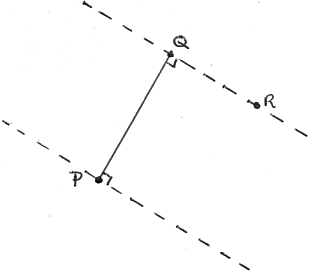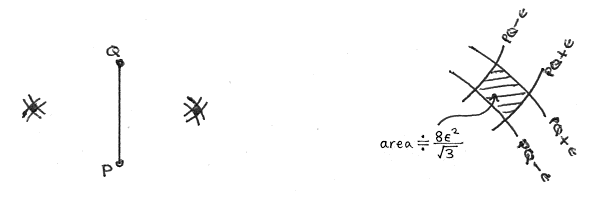page 29
Appendix 4: Triangular Arrangements of Sites
A. Right-angled triangles

Fix two ley points P and Q. Construct the lines (dotted) through P and Q which are perpendicular to PQ. If any ley point R falls on either dotted line, a right angled triangle PQR results.
The mean number of points R falling on the dotted lines is
|
(where p is as defined in the Introduction) and so PQ results in, on average, 2(n−2)p right-angled triangles.
There are nC2 ways of choosing the initial pair of points P and Q. Therefore there are
|
right angled triangles to be found over the whole map, the prefixed factor of ½ being because each triangle is counted twice in summing over the whole map.

Thus:
|
B. Equilateral triangles

Fix a line PQ by choosing two ley points P and Q.
An equilateral triangle is formed if a third point R falls in either shaded region. If PR and QR are to be within ±ε of the length of PQ, then the probability that a point R will so fall is approximately 2×8ε2/A√3, where A is the area of the map.
With PQ fixed, the mean number of equilateral triangles which will result is approximately 16ε2(n–2)/A√3, and summing over all possible PQ we can expect:
|
the prefixed factor of 1/3 being because in summing over the whole map each equilateral triangle is counted 3 times. Thus:
|
2014: For an alternative theoretical discussion, see the update to this appendix